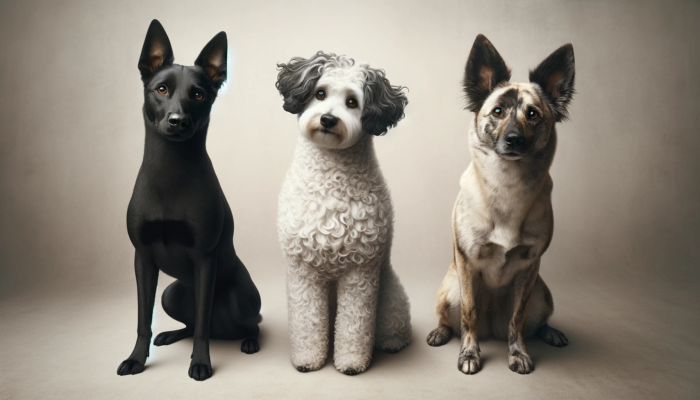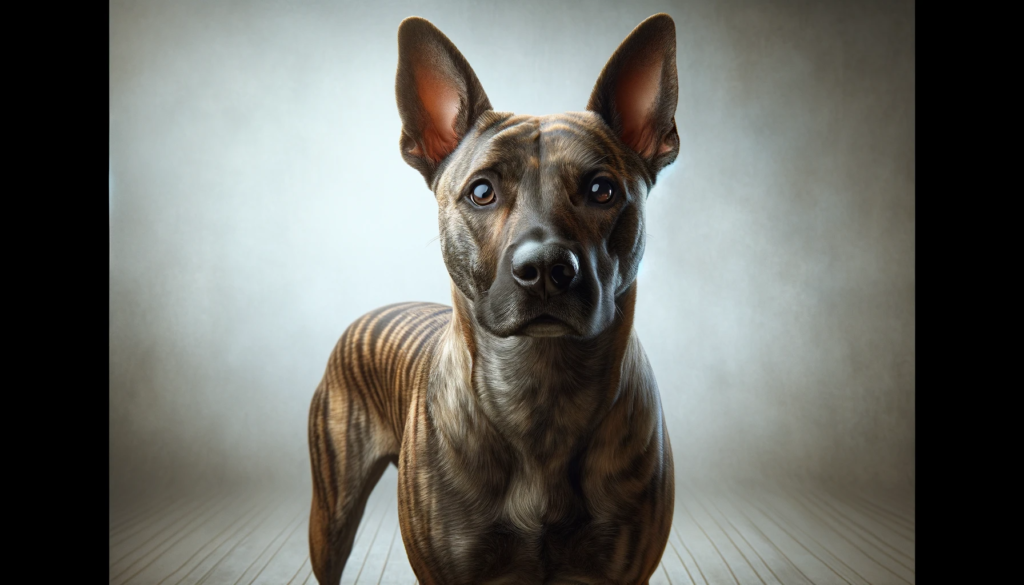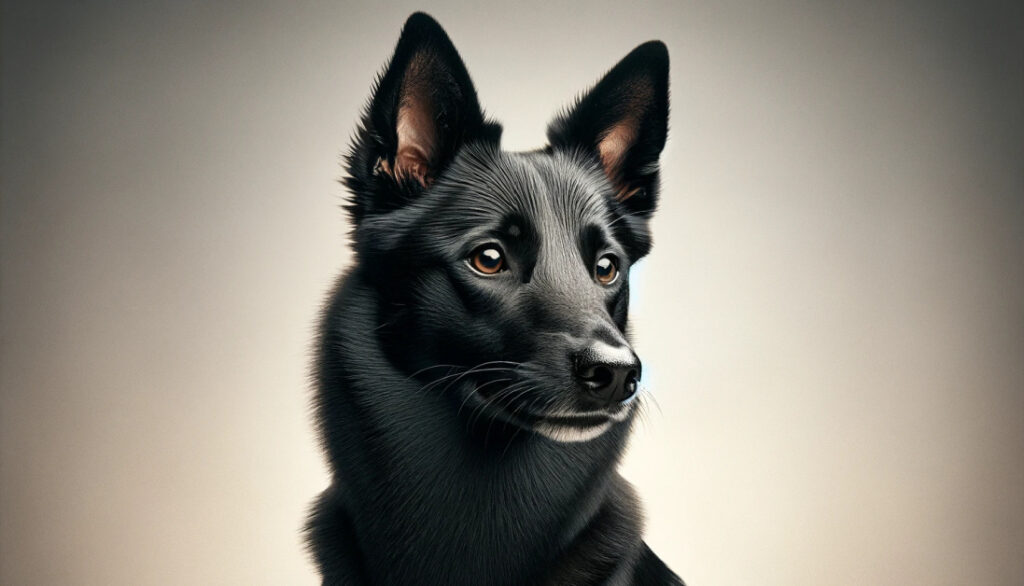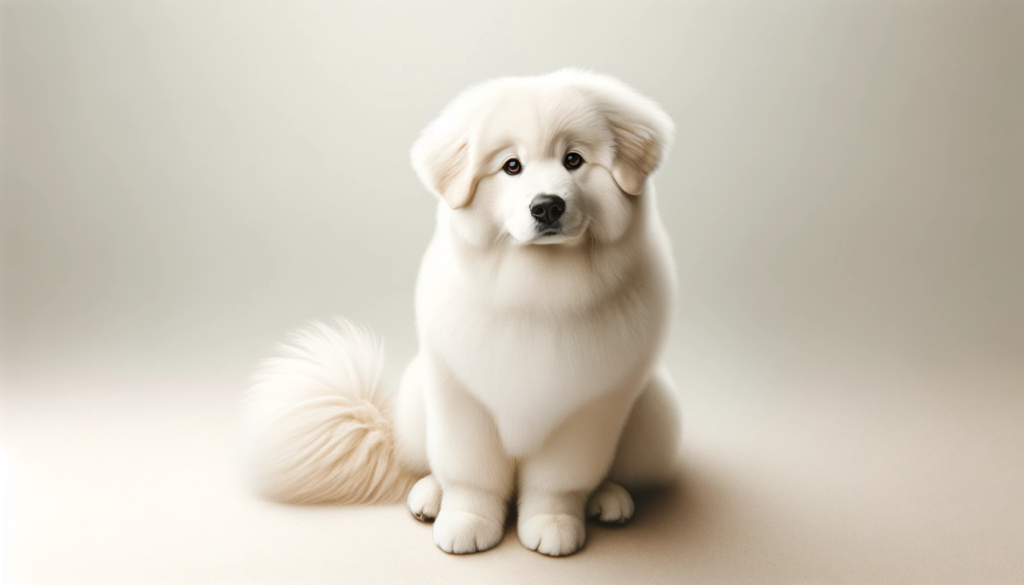As a holistic veterinarian, I’ve always been intrigued by the diversity and uniqueness of different dog breeds around the world. Today, I invite you to embark on an exciting journey to Vietnam. A country renowned for its rich cultural heritage and diverse canine companions.

We will explore the origins, characteristics, and the historical significance of Vietnamese dog breeds. Dogs in Vietnam not only play a role as loyal companions but also represent a profound cultural and historical symbol. Some ancient breeds are considered a precious link to the nation’s past, holding stories and traditions that go back centuries.
The physical traits and behavioral patterns of Vietnamese canines are as diverse as their origins. From the agile Phu Quoc Ridgeback with its distinctive ridge of hair running down its back, to the sturdy and resilient mountain breed, the H’mong dog, each breed possesses unique characteristics that set them apart.
However, preserving these Vietnamese native dog breeds has become increasingly important. The purity of these breeds is under threat due to cross-breeding and diminishing populations. As a result, intense efforts are being made to conserve these valuable breeds and their pure lineage. Indeed, Vietnamese dog breeds are not just pets but an integral part of the country’s heritage that needs to be preserved and promoted.

Historical Significance of Vietnamese Dog Breeds
Unraveling the history of Vietnamese dog breeds is akin to embarking on a fascinating journey that intertwines and dances with the ebb and flow of Vietnam’s own rich past. The Vietnamese people have always shared an intimate relationship with their canine companions. They appreciate them not just as hunting partners or guards, but also as loyal friends.
The Role of Native Dogs in Vietnamese Culture
Native Vietnamese dogs have long played an integral part in the cultural ethos of the country. They’ve been depicted in folklore, literature, and art, serving as symbols of courage, loyalty, and resilience. Throughout the ages, they’ve been revered for their hunting prowess, protective instincts, and their unique ability to adapt to the diverse Vietnamese landscapes.
The H’mong people, for instance, have a centuries-old tradition of breeding their namesake H’mong dogs, indigenous to the mountainous regions of Vietnam. These dogs have been bred over generations for their strength and intelligence, aiding in hunting and guarding livestock from predators. In local folklore, the H’mong dog is heralded as a sacred animal, a guardian of the home and family.
Ancient Breeds: A Link to Vietnam’s Past
Dig deeper into the annals of Vietnamese history, and you’ll discover that these dog breeds are more than mere pets; they are living links to the country’s past. The Phu Quoc Ridgeback, for example, is believed to have a lineage that dates back hundreds of years. Historians opine that the breed originated on the Phu Quoc Island and has descended from a wild dog species that roamed the region.
Its unique ridgeback feature, a strip of hair growing in the opposite direction along the spine, is shared only by two other breeds globally. Including the Rhodesian Ridgeback from Africa and the Thai Ridgeback. This gives the Phu Quoc Ridgeback a distinct genetic marker. Which is a testament to its ancient origins, earning it a revered status in Vietnamese culture.
Another notable Vietnamese breed is the Bac Ha dog, a relatively rare breed known for its robustness, agility, and unique spotted coat. Originating from the Bac Ha district in the northern province of Lao Cai. This dog breed holds an esteemed position in local communities, often associated with prosperity and good fortune.
The deep-seated cultural significance and historic relevance of these Vietnamese dog breeds make them extraordinary. Their existence narrates tales of a time long past, of communities that have thrived, and of the enduring relationship between man and dog.
The Unique Physical Traits of Vietnamese Dog Breeds
Diverse yet distinct, each Vietnamese dog breed carries physical traits that set them apart. The most renowned Vietnamese breed, the Phu Quoc Ridgeback, is known for its signature ridge of hair running along its back, a trait shared by only two other breeds. These include the Thai Ridgeback and the Rhodesian Ridgeback. These agile dogs are medium-sized, with a muscular, streamlined body built for speed. Their short, smooth coat comes in various shades, including fawn, brindle, black, and spotted.
Another equally fascinating breed is the H’mong dog. Indigenous to the mountainous regions of Northern Vietnam, these dogs are robust and athletic, designed to survive in harsh terrains. They have a thick, double coat to keep them warm and a muscular body that empowers them to be adept hunters. Their ears stand erect, and their eyes gleam with an intelligent, alert expression.
Last but not least, the Bac Ha dog is a rare sight, even in its native land. This breed is small, with a characteristic curled tail and a dense, fluffy coat that often comes in shades of white or cream. Bac Ha dogs have a distinct face, with a flat nose and expressive eyes that exude a gentle demeanor.
Understanding the Behavior Patterns and Temperament of Vietnamese Dogs
The temperament of Vietnamese dog breeds is as diverse as their physical traits. The Phu Quoc Ridgeback is a loyal and intelligent breed, with a high energy level that needs to be channeled through regular exercise and mental stimulation. Renowned for their hunting skills and agility, they make excellent companions for active individuals and families. At the same time, they exhibit a strong protective instinct and can be territorial, making them great watchdogs.
The H’mong dog, on the other hand, is known for its bravery and resilience. Adapted to survive in harsh weather conditions and rugged terrains, these dogs are strong-willed and independent. They are also very protective of their families and make excellent guard dogs. Training a H’mong dog requires patience and consistency, as they can be stubborn at times.
Meanwhile, the Bac Ha dog stands out for its gentle and friendly disposition. These dogs are affectionate and bond strongly with their human companions, making them perfect for families. Despite their small size, they are robust and enjoy a good amount of physical activity.
Understanding these unique traits and temperaments of Vietnamese dog breeds not only helps prospective dog parents make informed decisions. As well as, aids in enhancing the bond between humans and their canine companions. It’s essential to remember that each breed has its own needs and should be cared for accordingly. By doing so, we can ensure a harmonious co-existence with these beautiful breeds that are a testament to Vietnam’s rich and diverse canine heritage.
The Phu Quoc Ridgeback: Vietnam’s Prized Breed
The Phu Quoc Ridgeback is Vietnam’s most cherished and recognized native breed. This unique breed is one of only three known ridgeback breeds in the world. Its origins are steeped in the rich and vibrant history of Vietnam’s Phu Quoc Island.
Origins and History of the Phu Quoc Ridgeback
The Phu Quoc Ridgeback hails from the picturesque Phu Quoc Island, located in the Gulf of Thailand. The breed’s history traces back hundreds of years, with ancient manuscripts referencing dogs that closely resemble today’s Phu Quoc Ridgebacks. Local folklore suggests that these dogs were originally wild, domesticated by the island’s inhabitants for hunting and protection.
These dogs developed a signature ridge of hair along their back, running in the opposite direction to the rest of their coat. This distinct trait has earned them the ‘Ridgeback’ moniker. Phu Quoc Ridgebacks also boast a remarkable ability to swim, making them superb hunting dogs across the island’s diverse terrains.
Distinct Features and Temperament
Characterized by a lean, muscular body, the Phu Quoc Ridgeback is a sight to behold. They have a short, smooth coat with a unique ridge running along the spine, formed by hair growing in the opposite direction to the rest of the coat. Their deep chest and slim waist are a testament to the breed’s agility and speed.
- Height: 20-25 inches
- Weight: 25-35 pounds
- Life Expectancy: 12-14 years
The Phu Quoc Ridgeback is known for its intelligence, agility, and independence. They have a strong prey drive, which can be channelized towards activities that stimulate their mind and body. Being loyal and protective, they make excellent family pets and guard dogs. However, they require patient and consistent training due to their independent streak.
Despite their hunting roots, Phu Quoc Ridgebacks are quite sociable and get along well with other pets if properly socialized. They are robust, hardy dogs, well-adapted to the tropical climate of Vietnam.
With increasing recognition and efforts to preserve native breeds, the Phu Quoc Ridgeback is gradually gaining international attention. As more people discover the charm and uniqueness of this Vietnamese dog breed, the hope is that their numbers will continue to grow, both in Vietnam and around the world. The Phu Quoc Ridgeback is a living testament to Vietnam’s rich canine heritage and a proud symbol of the country’s unique biodiversity.

Vietnamese Dog Breeds: Discovering Vietnam’s Native Canines
List of Vietnamese Dog Breeds
The H’mong Dog: A Mountain Breed
The H’mong dog is a breed that has a rich history and a unique connection with the H’mong people, a native ethnic group residing in the mountainous regions of Vietnam. This breed is known for its exceptional strength and endurance, making it an excellent working dog for the H’mong people who primarily engage in farming and hunting.
The H’mong dog typically has a sturdy build with a thick coat of fur. This protects them from the harsh weather conditions in the mountains. They have a wolf-like appearance with a sharp gaze, erect ears, and a bushy tail that curls over their back. Despite their somewhat intimidating look, these dogs are known for their loyalty and protective nature, making them excellent companions.
The Bac Ha Dog: A Rare Sight
The Bac Ha dog is another native Vietnamese breed, but unlike the H’mong dog, this breed is quite rare and less known. Originating from the Bac Ha district in the Lao Cai province. These dogs are often associated with the ethnic group of the same name.
Bac Ha dogs are small in size with a lean, muscular body. They have a short coat, usually white, with distinctive patches of different colors. Their ears are typically large and stand erect, giving them a unique appearance. Bac Ha dogs are known for their agility and speed, often used for hunting small game.
Despite their small size, Bac Ha dogs are incredibly brave and protective. They are known to fearlessly guard their homes and families, even in the face of larger predators. Their loyalty and courage make them a beloved breed among the Bac Ha people.
Preserving Vietnam’s Native Dog Breeds
The H’mong and Bac Ha dogs are just two examples of the unique dog breeds that originate from Vietnam. However, like many native breeds around the world, they face challenges that threaten their existence. Urbanization, cross-breeding, and a lack of awareness about these breeds have resulted in their decreasing numbers.
Efforts are underway to preserve these native breeds and maintain their pure lineage. Breed-specific clubs and associations are working towards creating awareness about these dogs, promoting responsible breeding, and ensuring their survival for future generations.
As dog lovers, it’s important that we support these efforts. By learning more about these breeds, adopting responsibly, and spreading awareness, we can contribute to the preservation of these unique Vietnamese dog breeds. After all, each breed carries a piece of Vietnam’s rich heritage and culture, and losing them would mean losing a part of the country’s history.
Remember, every breed, no matter how rare or common, deserves love, care, and a safe home. So, the next time you’re considering adding a furry friend to your family, why not consider one of these unique Vietnamese breeds?
The Importance of Purebred Conservation
Preserving the unique heritage of Vietnamese dog breeds is a task of immense importance. These breeds are not just pets; they are a piece of Vietnam’s rich cultural tapestry, and their survival is crucial for the preservation of the country’s unique history and biodiversity.
Challenges Facing Vietnamese Dog Breeds
Sadly, the purebred population of these indigenous breeds is under threat. There are several factors contributing to this issue:
- Loss of genetic diversity: Due to inappropriate breeding practices and uncontrolled cross-breeding, the genetic diversity of these breeds is decreasing. This can lead to a multitude of health problems and could potentially wipe out unique breed characteristics.
- Urbanization: Rapid urbanization and changing lifestyles have led to a preference for foreign dog breeds. The demand for indigenous breeds has declined, leading to a decrease in their population.
- Poaching and illegal trade: Some Vietnamese dog breeds, like the Phu Quoc Ridgeback, are highly prized for their unique characteristics. This has led to illegal poaching and trade, further threatening the survival of these breeds.
- Lack of awareness and appreciation: Many people are unaware of the rich heritage and excellent qualities of Vietnamese dog breeds. There’s a lack of appreciation for these animals, leading to a gradual decrease in their numbers.
Efforts to Preserve the Purity of Native Breeds
Despite these challenges, concerted efforts are being made to conserve and protect Vietnam’s native canines. These include:
- Establishing Breeding Centers: Several dedicated breeders and organizations are working to establish breeding centers for Vietnamese dog breeds. They strictly adhere to ethical breeding practices and aim to maintain the genetic purity of these breeds.
- Public Awareness Campaigns: Efforts are being made to educate the public about the unique characteristics and historical significance of these native breeds. Media campaigns, dog shows, and events are being organized to increase appreciation for these dogs.
- Legal Protection: Some local governments have recognized the importance of preserving these breeds and have implemented laws to protect them from poaching and illegal trade.
- International Recognition: Efforts are being made to get Vietnamese dog breeds, particularly the Phu Quoc Ridgeback, recognized by international kennel clubs. This can greatly contribute to increasing their popularity and ensuring their preservation.
As a dog parent, you can also contribute to the conservation of Vietnamese dog breeds. Consider adopting one of these unique canines as your pet. You will not only get a loving and loyal companion, but also help preserve a piece of Vietnam’s rich cultural heritage.

Vietnamese Dogs in Modern Times
As we journey into the modern era, it’s fascinating to see how Vietnamese dog breeds have adapted and evolved. The world of dog ownership in Vietnam today is a blend of tradition and modernity, with these unique dog breeds taking center stage.
Adoption and Domestication Trends
The trend of adopting and domesticating Vietnamese dog breeds has seen a significant uptick in recent years. More people are recognizing the charm and characteristics of these native breeds, driving a surge in their popularity. The Vietnamese Phu Quoc Ridgeback, for instance, has gained fame not just locally but internationally as well, all thanks to its unique ridgeback feature, athletic build, and loyal nature.
Another popular choice among dog lovers is the H’mong Dog. This breed is known for its sturdy physique, intelligence, and incredible instinct for hunting. They make excellent companions and are being adopted more and more for their loyalty and protective nature. The Bac Ha Dog, although still quite rare, is also gaining recognition for its unique appearance and affectionate personality.
While the trend of adoption and domestication is positive, it’s important to remember that these dogs are more than just pets—they’re a living testament to Vietnam’s rich history and culture.
Showcasing Vietnamese Breeds in Dog Shows
One of the ways Vietnamese dog breeds are being highlighted is through dog shows, where their unique features and behaviors can be showcased to a wider audience. These events offer a platform for these breeds to get the recognition they deserve and increase their visibility.
Recently, there has been a particular interest in the Vietnamese Phu Quoc Ridgeback, which has been making waves at dog shows worldwide. This breed’s athletic build, unique ridgeback, and elegant gait have garnered it much attention and applause. Such events also provide an excellent opportunity to educate people about the importance of preserving these native dog breeds and their significance to Vietnamese heritage.
Another breed making its mark in dog shows is the H’mong Dog. Known for its agility and intelligence, this breed’s skills are often highlighted in these events, creating a sense of wonder and appreciation among the audience.
While these shows play a crucial part in promoting Vietnamese dog breeds, they also serve as a reminder of the need to preserve the purity of these breeds. The appeal of these unique canines lies in their rich history, distinctive traits, and their deep-rooted connection to Vietnamese culture. It’s not just about owning a dog—it’s also about cherishing a piece of Vietnamese heritage.
Promoting Vietnamese Dog Breeds Internationally
The Global Appeal of Unique Dog Breeds
It’s no secret that unique dog breeds capture the hearts of dog enthusiasts around the world. Just as the unique characteristics of the Siberian Husky or the Shiba Inu have made them globally popular, so too can the distinctiveness of Vietnamese dog breeds lead to international recognition. Take, for instance, the Phu Quoc Ridgeback, with its webbed feet and ridge of hair running down its back; these traits are not just cute, but also functional, allowing the breed to excel at swimming and hunting. Similarly, other Vietnamese breeds like the H’mong dog, known for its endurance and loyalty, and the Bac Ha dog, characterized by its agility and intelligence, have characteristics that can win the hearts of dog lovers everywhere.
Strategies for Increasing Awareness and Popularity
While the allure of Vietnamese dog breeds is evident, increasing their international popularity requires strategic efforts. Here are some ways we can achieve this:
- Participation in International Dog Shows: Showcasing Vietnamese breeds in international dog shows can significantly increase their visibility and recognition. This will provide an opportunity for the world to see the beauty and unique traits of these dogs.
- Collaboration with Breeders: Collaborating with international breeders can ensure the gene pool of these breeds stays vibrant, and can introduce these dogs to new markets.
- Canine Ambassador Programs: Establishing ambassador programs where Vietnamese dogs are trained and sent abroad can spark interest and attraction towards these breeds.
- Developing Breed Clubs: Forming clubs dedicated to specific Vietnamese breeds can help to gather a community of enthusiasts who can share knowledge and promote the breed.
At the end of the day, promoting Vietnamese dog breeds to the international stage is about more than just expanding their popularity. It’s about sharing a piece of Vietnam’s rich heritage and culture with the world. It’s about celebrating the diversity of the canine world and offering dog lovers everywhere the opportunity to discover new breeds to love and cherish.
So let’s shine a light on our Vietnamese canine companions and share their charm, their uniqueness, and their stories with the world. These breeds, with their distinct traits, their resilience, and their links to a rich cultural past, truly have so much to offer. And who knows? The next “must-have” dog for enthusiasts could very well come from the beautiful landscapes of Vietnam.
Frequently Asked Questions
Q1: What are some of the native dog breeds in Vietnam?
A1: Some of the native dog breeds in Vietnam include the Phu Quoc Ridgeback, the Bac Ha Dog, and the H’mong Dog.
Q2: What are the characteristics of the Phu Quoc Ridgeback?
A2: The Phu Quoc Ridgeback is known for its agility, intelligence, and its unique ridge of hair that runs down its back. They are also known for their ability to swim and climb trees.
Q3: Are Vietnamese dog breeds good for families?
A3: Yes, Vietnamese dog breeds can make great family pets. They are known for their loyalty, intelligence, and adaptability. However, they can also be independent and may require a firm hand in training.
Q4: How can I care for a Vietnamese dog breed?
A4: Like all dogs, Vietnamese dog breeds require regular exercise, a balanced diet, and regular vet check-ups. They also benefit from mental stimulation, such as training and socialization.
Q5: Are Vietnamese dog breeds hypoallergenic?
A5: No specific Vietnamese dog breed is considered hypoallergenic. If you have allergies, it’s important to spend time with a breed before bringing one into your home to see if you have any reactions.
Dr. Candy, a holistic veterinarian and certified raw dog food nutrition specialist, graduated from Oklahoma State University in 2009 with a DVM and has since specialized in companion animal nutrition, advocating for species-specific diets. With a background in wildlife rehabilitation and oil spill response, she combines holistic health and conventional medicine in her unique approach to treating chronic diseases, allergies, and autoimmune conditions in pets. As the owner of a veterinary practice in Colorado and an author, Dr. Candy is dedicated to educating pet parents and improving the health and happiness of animals.




